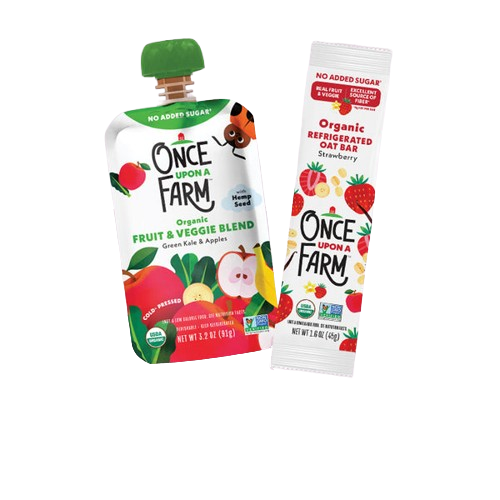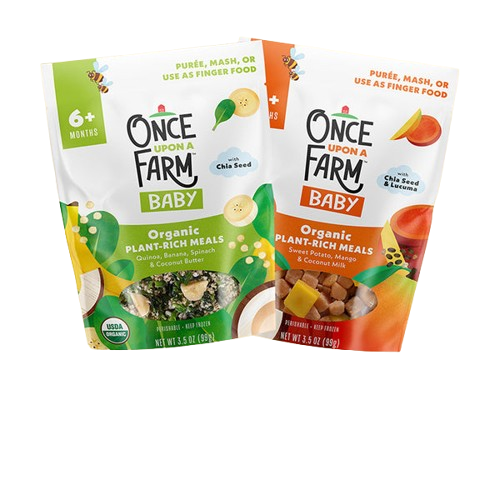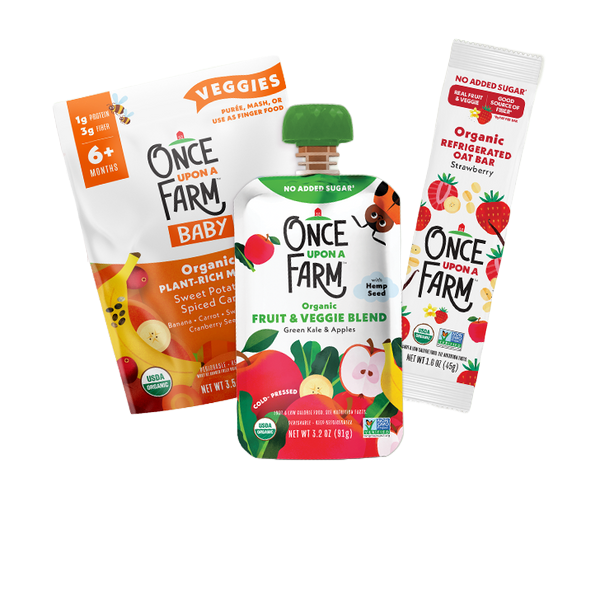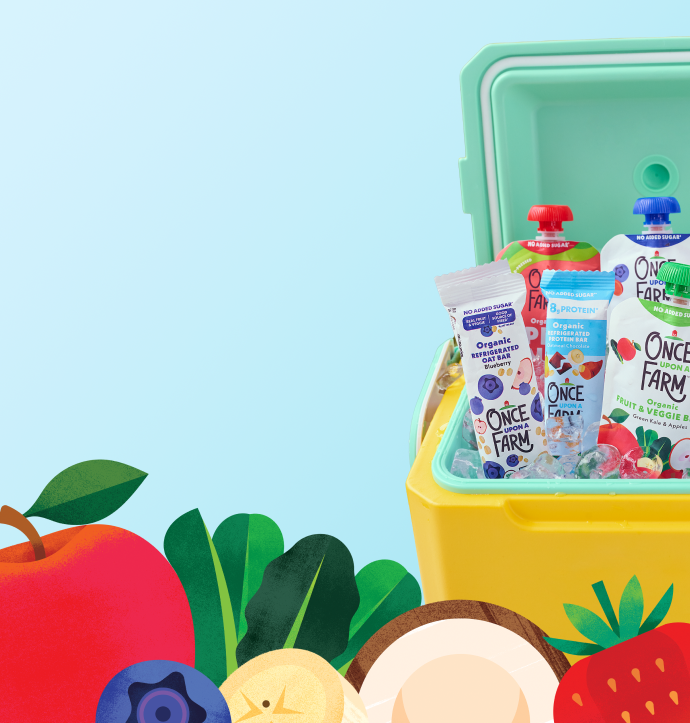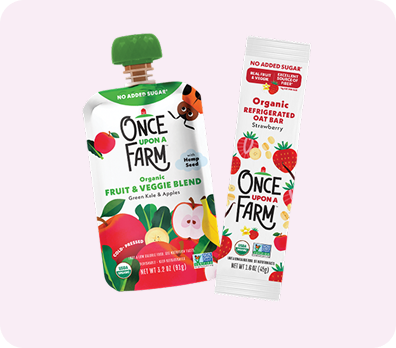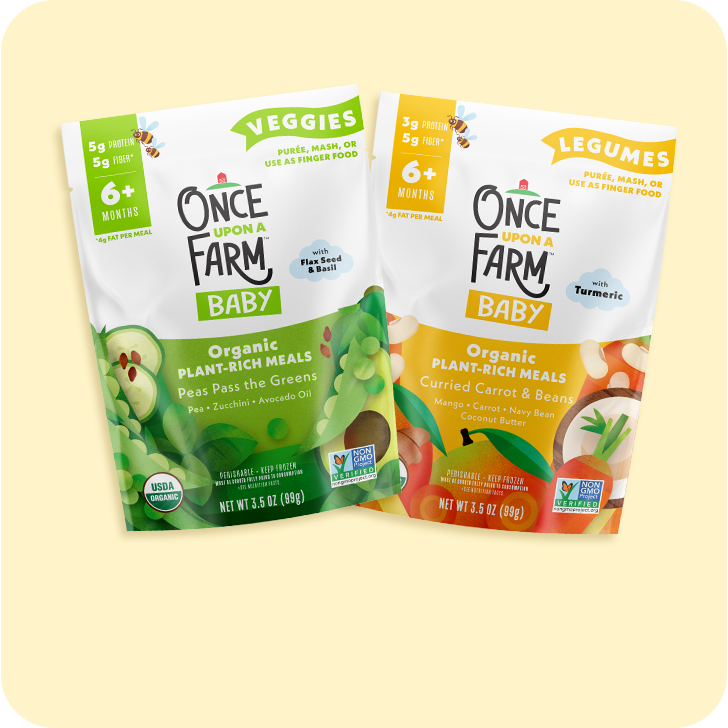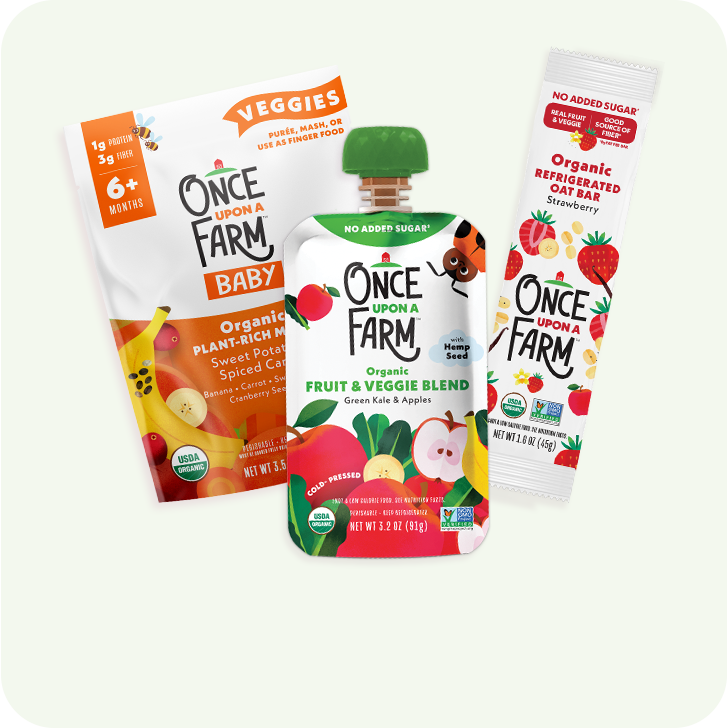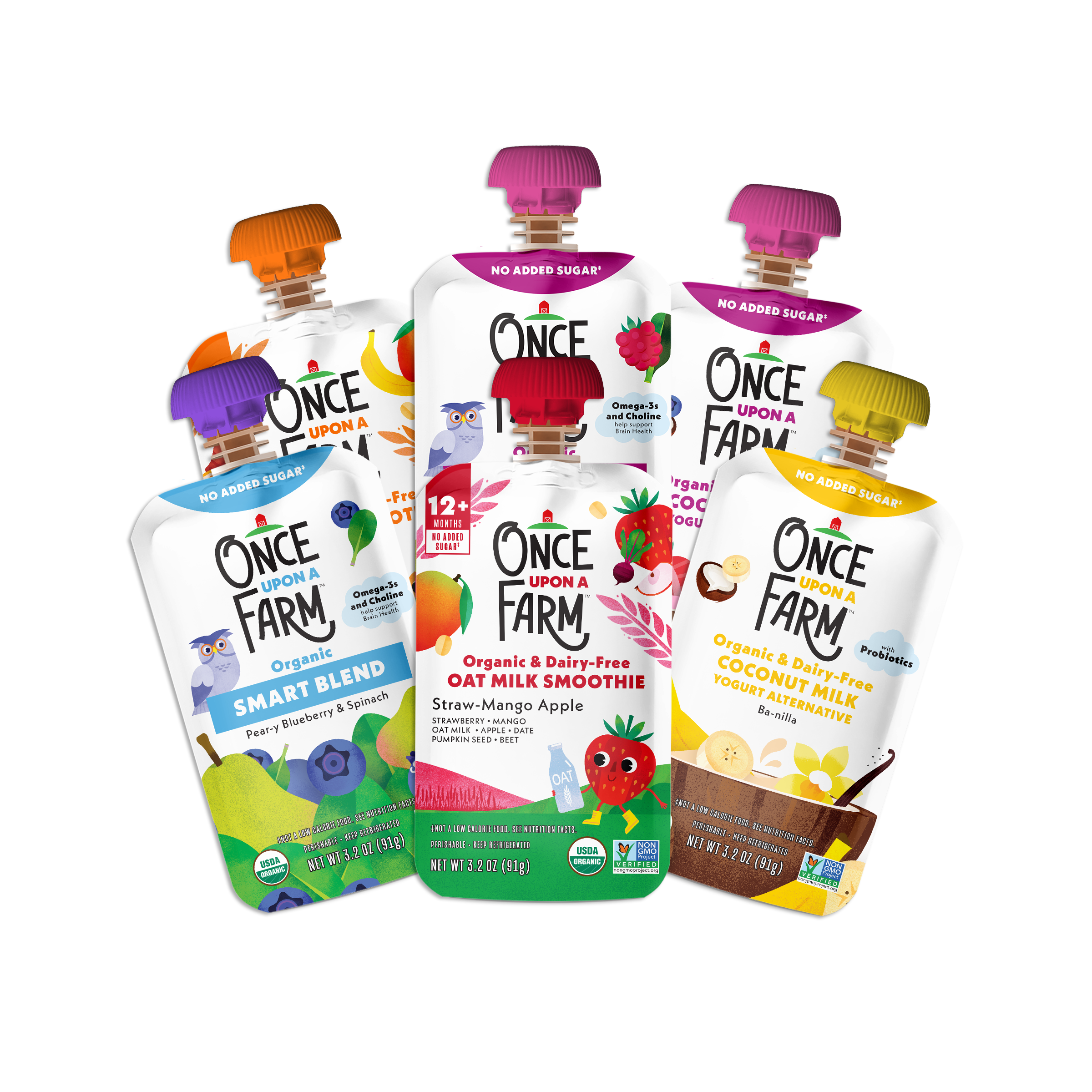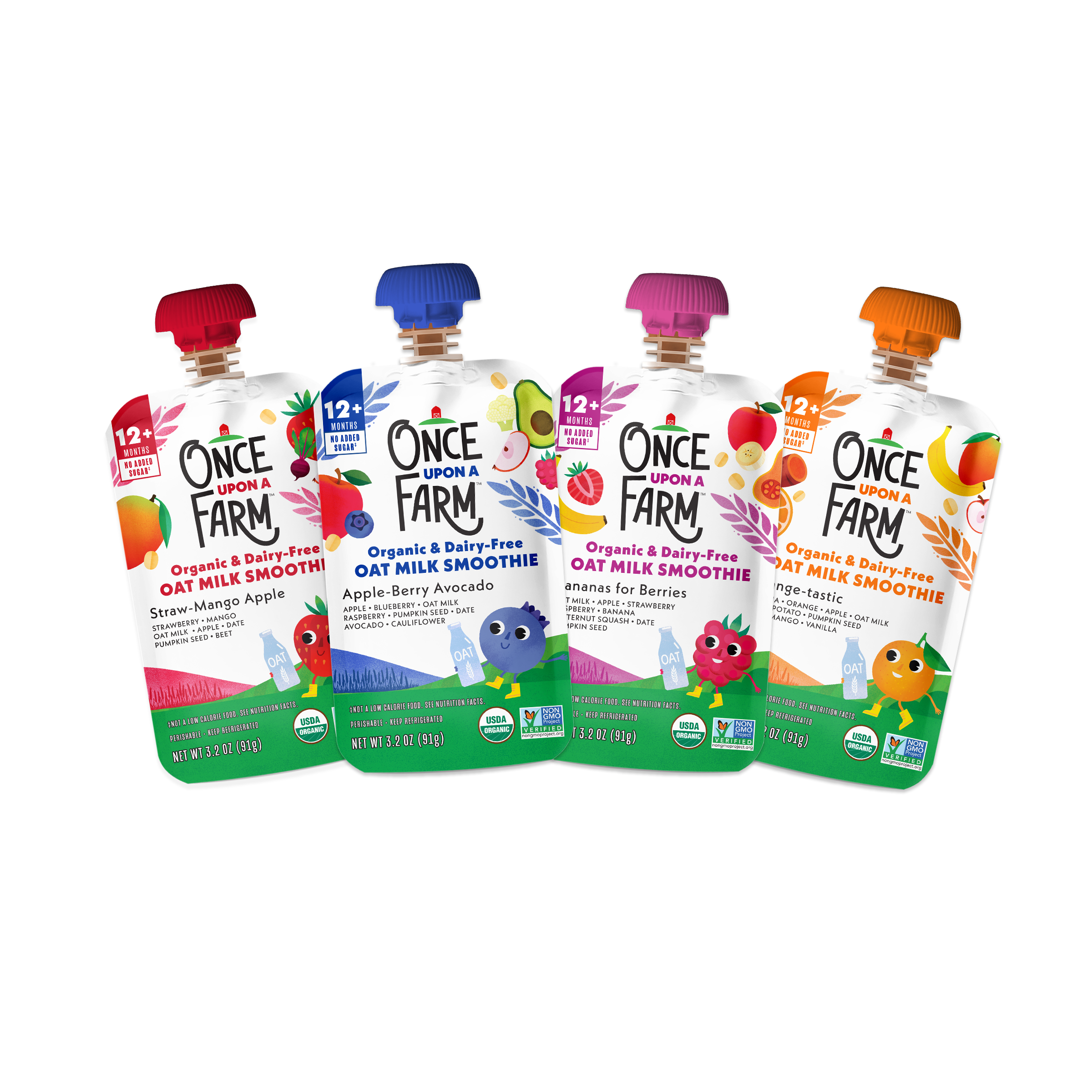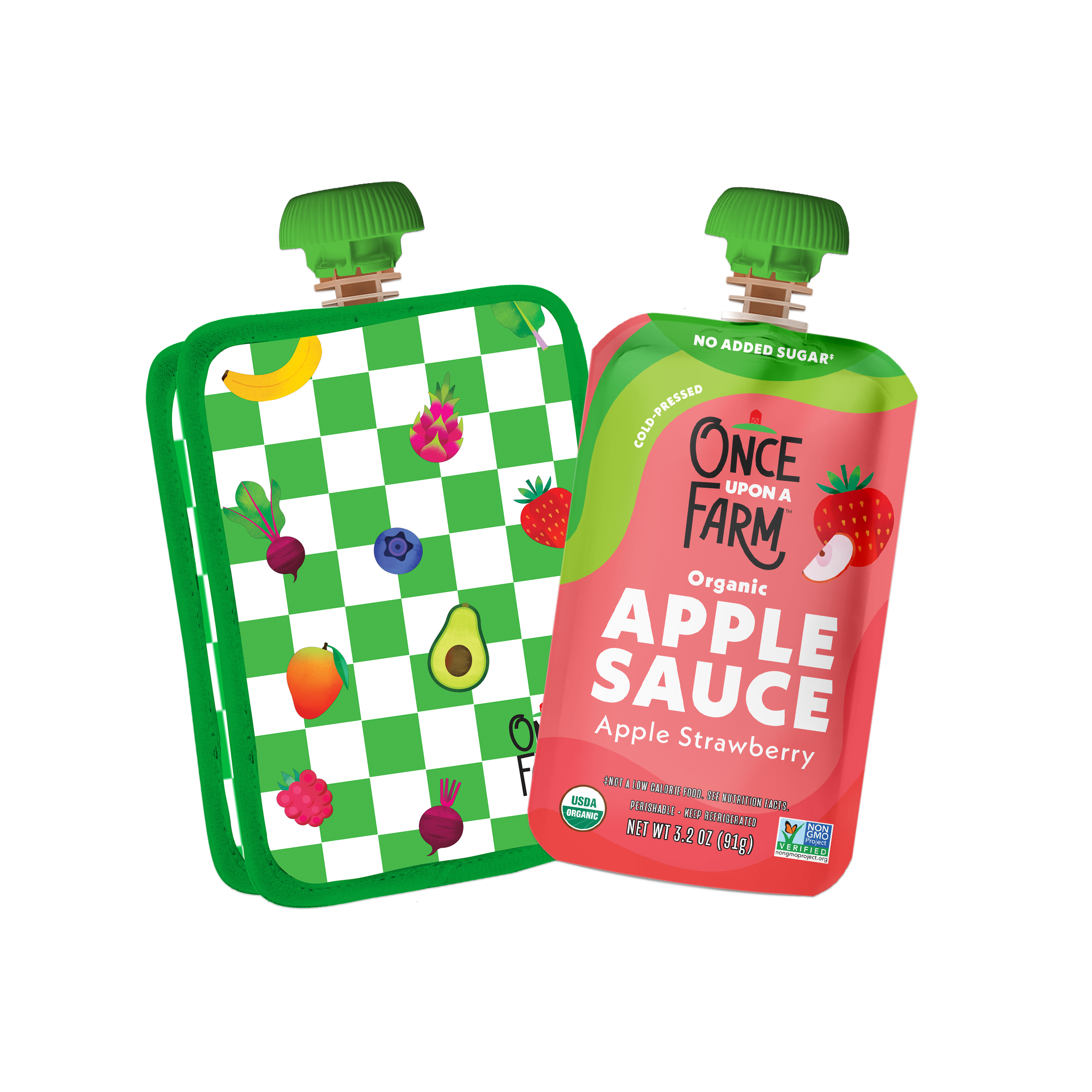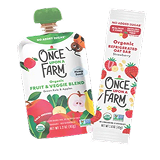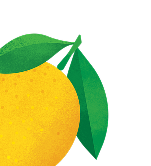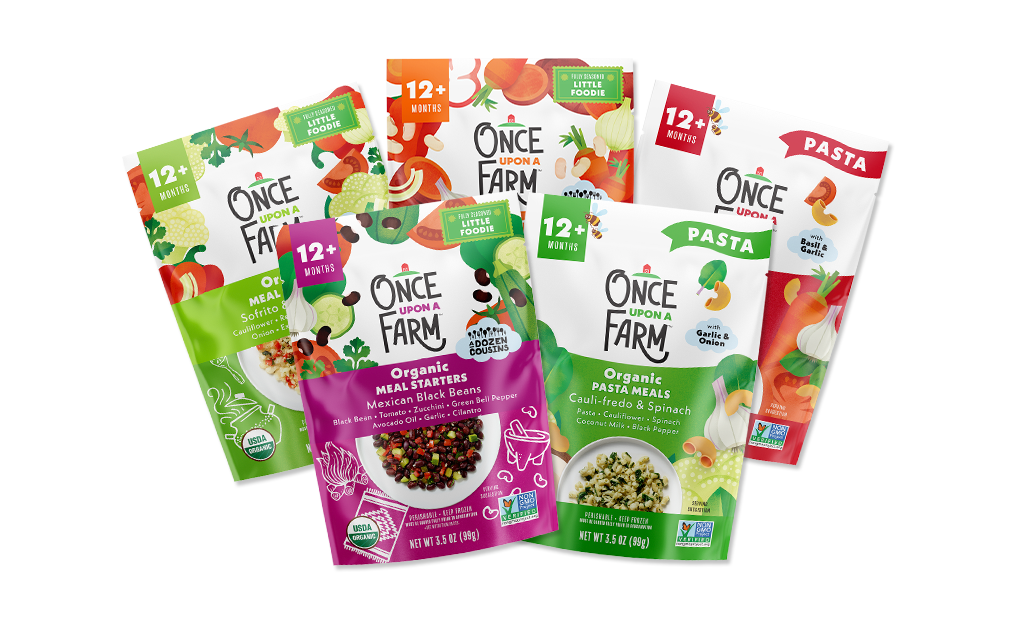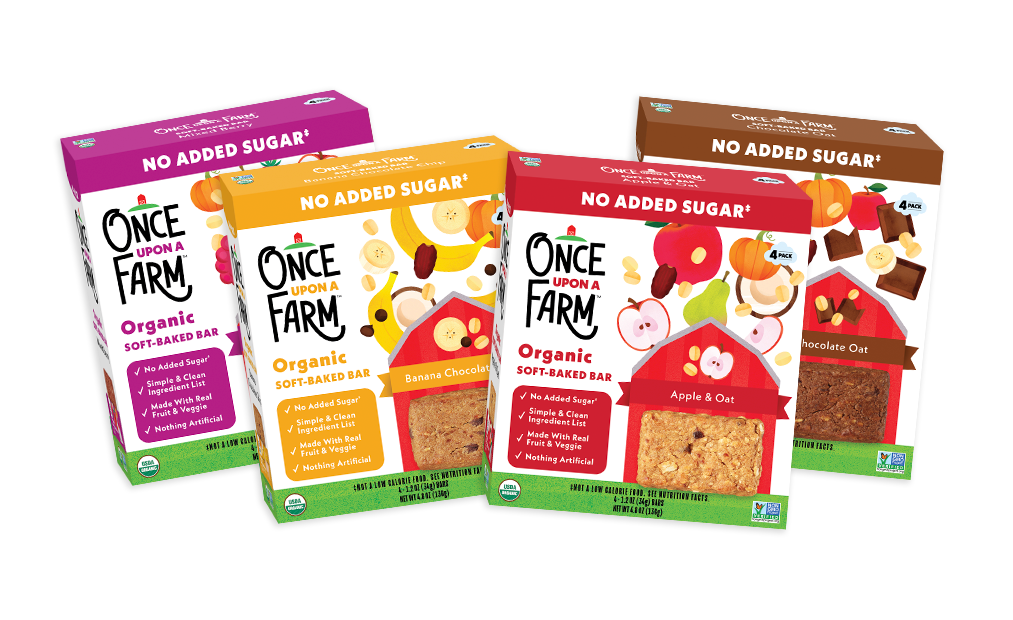The most common sustainability-related feedback we get is about our pouch packaging. When it comes to food safety, quality, and convenience, the pouch can do it all! When it comes to material circularity (renewed or regenerated, rather than wasted) and sustainability—there’s more work to be done.
We are grateful for your feedback. It signals to us that though you love our product, you want us to do better regarding our packaging. You invite us to listen and wonder aloud with you, Can we use more sustainable packaging? Can we use recyclable or compostable materials? Can we do away with plastic altogether?
These are great questions, with no simple answers. In the spirit of transparency and our commitment to continuous improvement, here is how we are approaching the use of plastic in our packaging.
Why the Pouch?
The pouch makes fresh and nutritious snacking convenient and mess-free. (Even outside of the baby aisle, the pouch format is growing in popularity among brands and consumers!)
To lock in nutrients and destroy any potentially harmful pathogens, we use a method called high-pressure processing or HPP. HPP is a game-changer, but it limits our packaging options to flexible materials and water-tight formats that can withstand the HPP process. The HPP process requires placing our finished packaged products in a water-filled chamber and applying huge amounts of pressure (rather than heat) to ensure food safety. This allows us to provide quality cold-pressed products without sacrificing the farm-to-fridge nutrition and flavor your family knows and loves.
Balancing Convenience, Sustainability, and Feasibility
Still, the truth is that it’s tough to find a packaging format that is convenient, sustainable, and approved for food contact. In addition, it isn’t a simple switch, there are sustainability trade-offs outside of the plastic issue that we can’t ignore. This is known as “burden shifting,” when the solution to one environmental impact is the source of another.
For instance, adopting a reuse model with glass jars might eliminate plastic, but would require a whole new set of services, logistics, and infrastructure—and costs—that we (and society) are just not equipped to handle. (This also says nothing of the fact that rigid materials like glass can’t be used in the HPP process; this format is less convenient and easily accessible; and glass is heavier than plastic, increasing CO2 emissions related to transportation.) The point is not to make excuses, but to highlight the complexity of this important issue.
Quality, safety, nutrition, and convenience—these are all part of our promise to you and your families. We make sure you’re able to feed your little ones the best organic snacks and meals, without the hassle of sourcing, prepping, or blending. For all of the drawbacks of plastic, it’s the best option available to us right now to deliver on this promise to you.
The Added Hurdle of Plastic Film Recycling
We can’t talk about plastic without talking about recycling. Most pouches on the market are "multi-material," meaning they have several layers of different types of plastic. We've historically used this type of pouch to help maintain product quality, safety, and integrity during the hPP process. Unfortunately, the recycling industry is not currently set up to process multi-material plastics. The challenge of separating the different plastic layers, as well as food residue, prevents this type of pouch from being mechanically recycled at scale.
Our Mono-Material Pouch
One incremental step toward recyclability has been the development of a new pouch made entirely of just one type of plastic. In late 2024, we moved from our previous multi-material pouches to our new “lightweighted” pouches made entirely of high-quality, food-safe polyethylene, that uses about 20% less plastic than before. While still not curbside recyclable, these "mono-material" pouches may be easier for recyclers to process one day, compared to our old multi-material ones. Even still, this development will require advancements in waste management infrastructure to be able to accept, sort, and re-purpose them.
Recycling Is Important... But It Isn’t Enough
Improving the sustainability and circularity of our packaging is an important challenge we face as we aim to pass on a happier, healthier, more equitable world. Even as the industry continues to innovate and work toward more recyclable and sustainable packaging solutions, we also know that increasing recycling alone isn’t enough.
Efficient recycling can reduce air and water pollution, greenhouse gases, energy and water usage, and reliance on raw materials. However, there are limits to how many times some materials can be recycled. The recycling process itself requires energy inputs and can even generate landfill-bound waste. There are also accessibility issues, as even in 2020, only half of Americans had automatic access to curbside recycling. Recycling is still better than sending things to the landfill—it just isn’t the singular solution to the plastic problem.
Our Holistic Approach
Given these challenges, we take a holistic approach by balancing the needs of our products, our consumers, and our commitment to a better future. This includes a goal to reduce materials used in our products through “lightweighting” packaging design. We are proud to have achieved this with our updated mono-material pouch, ready to be recycled once the proper technology and infrastructure are widely in place. Additionally, we are working to increase our use of recycled fibers in our paper packaging, seeking out post-consumer recycled (PCR) materials wherever possible.
In the interim, we know it’s important to help divert materials from the landfill as best we can. Through our partnership with Recyclops, we offer a pouch mail-back program for all O’Farm pouches. This is one example of circularity in action as these mailed-back pouches get a second life as a component of new material.
There are many challenges surrounding plastic packaging. Between food product safety, manufacturing, and shelf-life needs combined with the need for better waste management infrastructure, plastic packaging is an industry-wide challenge that requires industry-wide solutions. There is a lot of work to be done, and we have a responsibility to do our part. We are committed to progress; a better story starts here.

